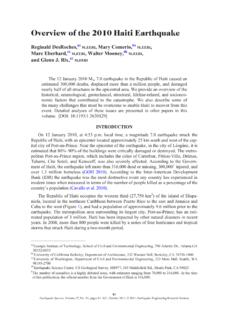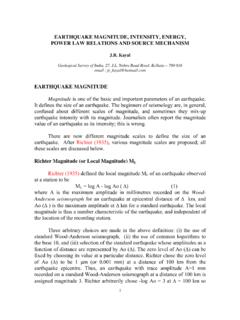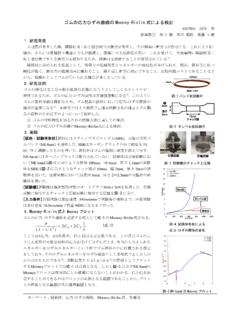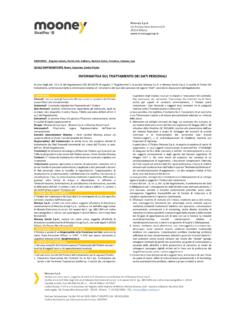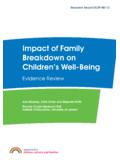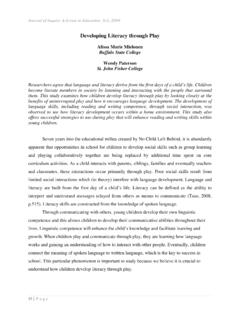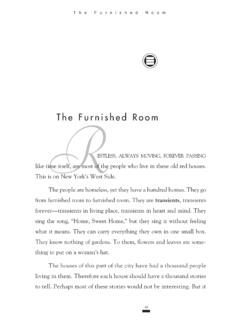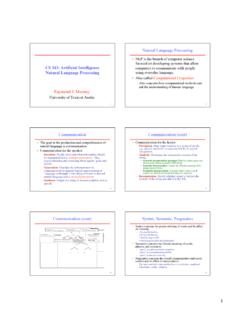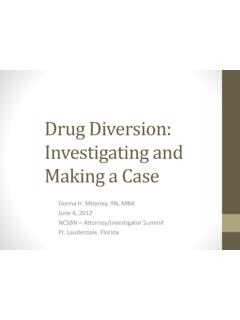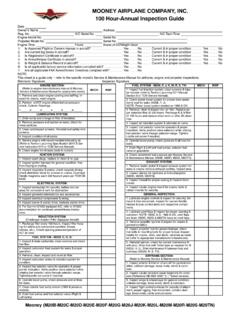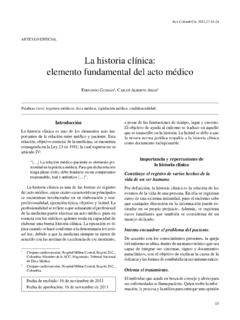Transcription of SEISMIC WAVES AND EARTHQUAKE LOCATION
1 SEISMIC WAVES AND EARTHQUAKE LOCATION Kayal Geological Survey of India, 27, Nehru Road Road, Kolkata 700 016 email : SEISMIC WAVES Two basic types of elastic WAVES or SEISMIC WAVES are generated by an EARTHQUAKE ; these are body WAVES and surface WAVES . These WAVES cause shaking that is felt, and cause damage in various ways. These WAVES are similar in many important ways to the familiar WAVES in air generated by a hand-clap or in water generated by a stone thrown into water. Body WAVES The body WAVES propagate within a body of rock. The faster of these body WAVES is called Primary wave (P-wave), or longitudinal wave or compressional wave, and the slower one is called Secondary wave (S-wave) or shear wave. P-wave The P-wave motion, same as that of sound wave in air, alternately pushes (compresses) and pulls (dilates) the rock (Fig.)
2 1). The motion of the particles is always in the direction of propagation. The P-wave, just like sound wave, travels through both solid rock such as granite and liquid material such as volcanic magma or water. It may be mentioned that, because of sound like nature, when P-wave emerges from deep in the Earth to the surface, a fraction of it is transmitted into atmosphere as sound WAVES . Such sounds, if frequency is greater than 15 cycles per second, are audible to animals or human beings. These are known as EARTHQUAKE sound. 1 Fig 1 : SEISMIC wave propagation The relation between compressional or P-wave velocity (Vp) and the elastic constants E (Young's modulus), (Poisson's ratio), K (bulk modulus), (rigidity modulus), (Lame's constant) and density is given as follows: ()212 += pV (1) S-wave It is known that the S-wave or the shear wave shears the rock sideways at right angle to the direction of propagation (Fig.
3 1). As shear deformation cannot be sustained in liquid, shear WAVES cannot propagate through liquid materials at all. The outer portion of Earth's core is assumed to be liquid because it does not transmit shear WAVES from earthquakes. The particle motion of the S-wave is perpendicular (transverse) to the propagation. If the particle motion of the S-wave is up and down in vertical plane; it is named SV wave. However, S-wave may also oscillate in horizontal plane, which is called S wave. HThe relation between S-wave velocity Vs, the elastic constants and density is given as: 21 = Vs (2) The velocity ratio VP/VS Comparing the equations (1) and (2), we find that the ratio of compressional to shear wave velocity is 2 VpVsK=+ = 431121212 (3) For most consolidated rock Vp/Vs ~ 3.
4 In this context, it may be mentioned that amplitudes of S- WAVES are generally five times larger than those of P- WAVES . This follows from the far field term of Green s function when modeling EARTHQUAKE shear sources taking into account Vp ~ 3Vs. Also, the periods of S- WAVES are longer, at least by a factor of 3, than those of P- WAVES due to differences in wave propagation velocity. Surface WAVES The second general type of EARTHQUAKE wave is called surface wave, because its motion is restricted to near the ground surface. Such WAVES correspond to ripples of water that travel across a lake. The wave motion is located at the outside surface itself, and as the depth below this surface increases, wave displacement becomes less and less.
5 Surface WAVES in earthquakes can be divided into two types; Love WAVES and Rayliegh WAVES . The Love WAVES are denoted as LQ (or G) and the Rayleigh WAVES as LR (or R). While Rayleigh WAVES exist at any free surface, Love WAVES require some kind of wave guide formed by velocity gradient. Both conditions are fulfilled in the real Earth. Love Wave (LQ) The British mathematician Love demonstrated that if an SH ray strike a reflecting horizon near surface at post critical angle, all the energy is trapped within the wave guide (Love, 1911). These WAVES propagate by multiple reflections between the top and bottom surface of the low speed layer near the surface. The WAVES are called Love WAVES , and denoted as LQ or G. Its motion is same as that of the S- WAVES that have no vertical displacement.
6 It moves the ground from side to side in a horizontal plane parallel to Earth's surface, but at right angle to the direction of propagation (Fig. 1); so the wave motion is horizontal and transverse. The Love wave velocity (VL) is equal to that of shear WAVES in the upper layer (VS1) for very short wave lengths, and to the velocity of shear WAVES in the lower layer (V S2) for very long wave lengths, Velocity V S1 < VL< V S2 (4) 3 The effects of Love WAVES are result of the horizontal shaking, which produces damage to the foundation of structures. Love WAVES do not propagate through water, it affect surface water only. It causes the sides of the lakes and ocean bays move backwards and forwards, pushing the water sideways like the sides of a vibrating tank.
7 Rayleigh Wave (LR) Rayleigh (1885) demonstrated that the surface boundary condition can be satisfied leading the existence of a coupled and trapped P-SV wave travelling along the surface, such as the Earth-air interface, with a velocity lower than shear velocity, and with an amplitude decaying exponentially away from the surface. This second type of surface wave is known as Rayleigh wave. In general the surface WAVES with periods 3 to 60s are denoted R or LR. Like rolling ocean WAVES , the Rayleigh WAVES develop the particle motion both vertically and horizontally in a vertical plane pointed in the direction of wave propagation. Since Rayleigh WAVES generate from coupled P and SV WAVES the particle motion is always in vertical plane, and due to phase shift between P and SV the particle motion is elliptical and retrograde (counter clockwise) with respect to the direction of propagation ( ).
8 The amplitude of the motion decreases exponentially with depth below the surface. The speed of Rayleigh wave (VR) is about 9/10th of shear wave (VS) in the same medium; the relation is given as VR < VS (5) For short wave-lengths VRg corresponds to 9/10 VS of the material comprising the surface layer. For very long wave-lengths, the VRL corresponds to 9/10 VS of the substratum material since effect of the surface layer is negligible when most of the WAVES travel in the zone below it. As seen from the above equations, S-wave is slower than P-wave, and Rayleigh wave is slower than Love wave. Thus as the WAVES radiate outwards from an EARTHQUAKE source, the different types of WAVES separate out from one another in a predictable pattern (Fig.)
9 2). 2a 4 2b Fig 2a: Seismogram showing body WAVES and surface WAVES Fig 2b: Seismogram of the 2004 Sumatra EARTHQUAKE showing different SEISMIC phases Guided WAVES Channel WAVES Guided WAVES exist in a layered medium such that its properties change only vertically and not horizontally. It is most significant when there is a channel or layer between two discontinuities. For example, coal seam which is a low velocity layer, if sandwiched between two high velocity layers, say sandstones, can act as a channel through which body WAVES will travel as guided WAVES or channel WAVES which may also include surface WAVES (Evison, 1955). There is a great deal of literature on channel wave seismology for coal exploration ( Krey, 1963; Dresen and Freystatter, 1976).
10 Lg WAVES Lg WAVES are one kind of guided WAVES in the continental crust. These are essentially high frequency Love WAVES at regional distances of thick continental crust. It travels over long continental paths with relatively little loss of energy, but is cut off abruptly when the path has even a small oceanic segment. The subscript Lg refers to granitic layer. Lg WAVES being critically incident on the cicMohorovi ( (Moho) discontinuity propagate by multiple reflections within the crust with a typical velocity km/s. These WAVES dominate the seismograms, specially the horizontal channels. Lg is usually recorded at epicentral distances of about 50 and larger. Ewing et al. (1957) identified it and defined it as a tool for finding boundary of continental structure.)
